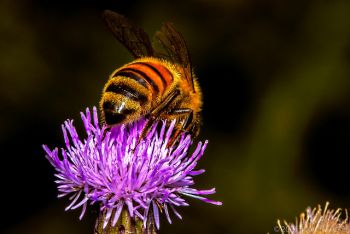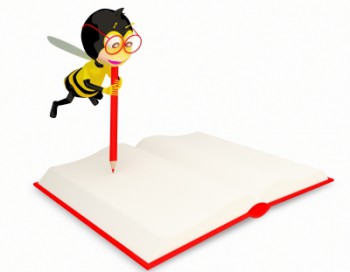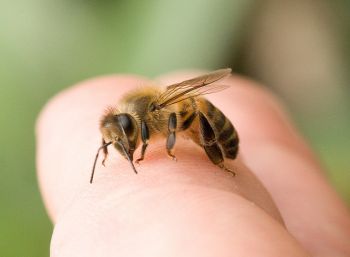What is Homeopathy?
It’s an alternative medicine created in 1796 by Samuel Hahnemann, based on his doctrine of like cures like (similia similibus curentur). Meaning that a substance that causes the symptoms of a disease in healthy people will cure similar symptoms in sick people.
The Gale encyclopedia of alternative medicine states:
“Homeopathic medicine operates on the principle that “like heals like.” This means that a disease can be cured by treating it with products that produce the same symptoms as the disease.”
“Like cures like” – what is this?
An example will explain this better:
First, we have a person who chops an onion. He will have watery eyes, a runny nose, sneezing, coughing, and throat irritation, triggered by exposure to the onion’s active substances.
Then, we have a sick person, having a cold, and developing the same symptoms: watery eyes, a runny nose, sneezing, coughing. And then we have a third person with allergy to feathers, with the same symptoms.
The homeopathic remedy, Allium cepa, which is made of potentized red onion, can help the persons with those symptoms, no matter the initial cause, cold or an allergy. So, the remedy which is made of onion (but after many dilutions and shakings, even brought to the point of no traces of onion left in) will heal the symptoms (otherwise produced by onion itself).
How are the remedies made?
The products homeopathy uses are called remedies.
The methods of manufacturing them follow another homeopathic law, the Law of Infinitesimals. As opposed to traditional medicine, the Law of Infinitesimals states that the lower a dose of curative, the more effective it is.
The doses are lowered using a process called homeopathic dilution. Roughly it goes like this: take 1 cup of initial product (onion in our example) and mix it with 10 cups of water. Shake it vigorously 100 times. From this new product, take only 1 cup and then mix it with another 10 cups of clear water. Shake it well. Then again, take 1 cup of this diluted mixture and mix it with another 10 cups of water. The process continues past the point where no molecules of the original substance remain. (Only the energy and information – as some therapists say.) So homeopathic remedies may physically consist of nothing but water.
The whole process is called potentization. The vigorous shakes are called succussions. Potentization is very important, because the repeated process of dilution and succussion brings about an energetic change that gives the substance a deeper curative effect. Repeated dilution removes all chance of chemical toxicity, allowing the homeopathic use of many substances that would otherwise not be safe to take as medicine.
The energetic change produced during potentization, stimulates the person’s system to deal with stress and illness more efficiently.
The difference from allopathic medicine is that homeopathic remedies do not have any chemical action in the body, and thus work differently than nutrients or drugs. Even starting from the premise that our bodies are only flesh and blood, we all admitted by now that they are not affected only by chemical substances, but by many other forces that have no chemical content, like electricity, radiation, thermal energy etc. A valid study on homeopathic remedies’ efficiency on our body should consider more these types of forces, than the chemical ones.
Are the remedies the same for everyone? Like paracetamol is?
No.
Because a homeopathic remedy is not a chemical product like paracetamol, but more an energetic-informational product. People, though all made of the same organs, have different reactions and habits and environmental conditions. Which is why they will be treated differently. Each sick person is prescribed an individualized plan based on his history, body type, and totality of personal characteristics. Homeopathic remedies are not selected simply to treat an isolated symptom or a named disease.
To work correctly, the remedies must be chosen to match the way an individual’s system expresses its unique response to the current stress and illness. Even within the same diagnosis, different people respond to different remedies.
Is homeopathy accepted?
No.
Homeopathy is practiced by licensed physicians and other qualified prescribers in many parts of the world, including Europe, Asia, UK and US. Homeopathy has been recommended by both Prince Charles and Mother Teresa.
But our scientific physicians said NO. Why? Here are some explanations:
– there are not insufficient evidence to support the science. It’s hard to do clinical trials when the treatment is not standard for everyone. A certain homeopathic remedy does not work for all the people, even if the disease is the same in all of them.
– it treats only symptoms, not diseases. (also, there some homeopathic practitioners say exactly the same thing about conventional medicine as well). Homeopathic treatment may prevent people from seeking more effective medical aid and healing the underlying cause of the disease.
Yet, The Food and Drug Administration approved homeopathic bee venom as a homeopathic medicine. We can find this product with the name: Apex Venenum Purum.
The effectiveness of remedies is only “proved” by experimentation and reports by famous homeopathic practitioners.
Can we self-diagnose and take homeopathic remedies?
No.
There are over 4,000 Homeopathic remedies not to mention the varying potencies. The best ways to administer homeopathics are to use those selected by a qualified homeopath, specific to the individual’s current symptoms, individualism and state of mind.
Despite being considered of being close to placebo, we still don’t know exactly how powerful these remedies are, as we do not have yet the necessary tools to measure their informational or energetic values. Most of the times, if we don’t know how something works, doesn’t mean it doesn’t work at all. It’s better to be cautious.
Are there homeopathic remedies with bee venom?
Yes.
Bee and bee venom have been used as homeopathy remedies since Hahnemann (ca. 1800).
– In 1858, C.W.Wolf a prominent homeopathic physician of Berlin edited his book Apis Mellifica or the poison of the honey bee considered as a therapeutic agent.
– The priniciple of Apis application was reviewed in 1880 by Goullon.
In homeopathical preparations whole bees are generally used in different potencies, both lower D and higher C potencies.
– About 1900, both bee venom and tincture from the entire insect were proved as a remedy by the Central New York State Homeopathic Society.
Apis Mellifica
It’s a remedy used as a remedy for many symptoms similar to those of bee stings. These include:
• inflammation with a burning sensation
• stinging pain
• itchy skin
• swollen and sensitive skin
• red, flushed, hot face
• hive-like welts on the skin
Though these are the symptoms of the sick person, this remedy is not given to a person unless he is the type that can react to it. So, besides these symptoms, the person is checked for its entire personality, mood, behavior, emotional state.
Here is how a person that can be treated with Apis should be:
According to DAVIDSON, T (2005) Gale Encyclopedia of Alternative Medicine. “Apis is used when stinging or burning inflammations appear in all parts of the body, not just on the skin. A homeopath could use Apis for sore throats, mumps, urinary tract infections, and other conditions where there is a stinging or burning sensation.
– appear quite rapidly.
– there is usually some swelling or edema along with the stinging sensation.
– the feeling of swollen eyelids, as if they had an eye infection.
– besides edema, often little urine is produced although there may be a strong urge to urinate. Despite this, the patient has little thirst or desire to drink.
– rough rash may appear, then disappear.
– the skin will be sensitive to the touch and alternatively hot and dry, then sweaty.
– a feeling of nauseated, or heartburn, or have tightness throughout their chest or abdomen that feels like they will burst if they cough or strain.
– certain mental and emotional symptoms: sadness, weeping, and depression can occur.
– the person had a strong emotional reaction such as jealousy, fear, rage, or anger.
In homeopathic medicine, the fact that certain symptoms get better or worse under different conditions is used as a diagnostic tool to indicate what remedy will be most effective.
Symptoms that benefit from treatment with Apis get worse when:
– applying warmth or drinking warm liquids.
– touch or pressure,
– when the person is in a closed, heated room.
– on the right side,
– after sleeping,
– in the late afternoon.
Symptoms improve with the application of cold and exposure to open air.
The Apis personality:
– fidgety, restless, and unpredictable.
– have wildly inappropriate reactions to emotional situations. They want company, but reject affection, and sometimes insist that they don’t need medical attention when they are clearly unwell.
– often have bouts of unprovoked jealousy and unprovoked tears.
– may fear ill health and death greatly.
Precautions
No particular precautions have been noted for using Apis. However, people who are allergic or sensitive to bee venom should be cautious. They may react adversely to certain potencies of homeopathic Apis.
Side effects
When taken in the recommended dilute form, no side effects from Apis have been reported. However, concentrated quantities of the bee venom can cause allergic reactions in susceptible people.” Yes, even if there isn’t any physical product left after potentization.
Preparations
There are two homeopathic dilution scales, the decimal (x) scale with a dilution of 1:10 and the centesimal (c) scale with a dilution factor of 1:100. Once the mixture is diluted, shaken, strained, then rediluted many times to reach the desired degree of potency, the final mixture is added to lactose tablets or pellets. These are then stored in dark places.
Homeopathic Apis venom is available commercially in tablets in many different strengths. Dosage depends on the symptoms being treated. Homeopathic tincture of whole honeybee is also available in a variety of strengths.”

According to a recent homeopathic report by Schraner, from 2007, Apis preparations can also be used for many other indications:
· Inflammation diseases of eyes, ears, respiration organs,
· Diseases of digestions organs, bladder, kidney
· Skin diseases, allergies, acne, abscesses
· Scarlet and German measles, diphtheria,
· Glandular and genital diseases
· Heart and blood circulation diseases
· Psychiatric diseases
Homeopathic Bee Venom
If you are experiencing symptoms from conditions such as neck and back pain, fibromyalgia, chronic headaches, arthritis or nerve pain syndromes, homeopathic bee venom (HBV) may relieve your symptoms.
Approved by the Food and Drug Administration (FDA) as a homeopathic medicine, homeopathic bee venom has at least 18 active substances including neurotransmitters. Substances such as mellitin, adolapin and apamin have anti-inflammatory effects, while compound X and histamine assist in the inflammatory response.
Homeopathic bee venom is highly diluted and uses the amount of venom equivalent to 4 percent of an average bee sting.
The use of HBV as a treatment can bring mild pain, redness, itching, and swelling to the area of injection. This is considered typical and should only last a few minutes. There is also the possibility of an allergic reaction to the venom. People with severe bee allergies should avoid this type of treatment.
Related articles about the therapy with bee venom:
• Bee venom
• Bee venom for therapy: General Information
• Bee venom for therapy: Arthritis. What is apipuncture?
• Bee venom for therapy: Alzheimer’s disease
• Bee venom for therapy: Multiple Sclerosis
• Bee venom a possible natural treatment for Parkinson’s disease
• Honey and Alzheimer’s natural treatment
• What is the best cream for wrinkles?
• How to treat bee sting
• Venom Immunotherapy or HOW TO TREAT BEE STING ALLERGY FOR GOOD!
******************************************
//
******************************************
References:
Bee Product Science, http://www.bee-hexagon.net, February 2014
http://hospitals.jefferson.edu/tests-and-treatments/homeopathic-medicine/;
http://www.naturopharm.co.nz/products/classical_remedies/ApisMellifica.asp;
http://www.balancedlivingasia.com/shop.php?main_page=product_info&cPath=84_126&products_id=198;
“Honey Bee On Thistle” featured picture by Scott Tucker via flickr.com







